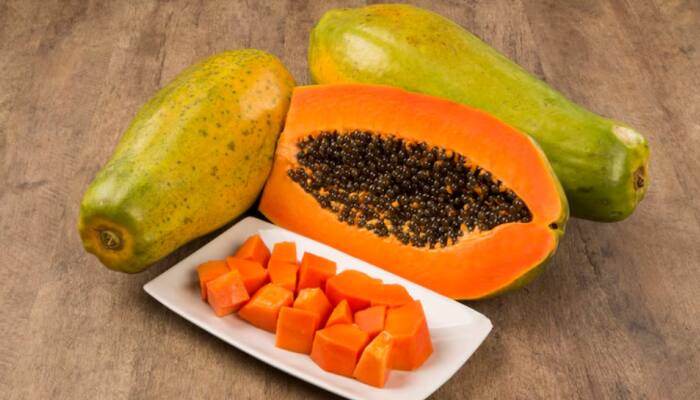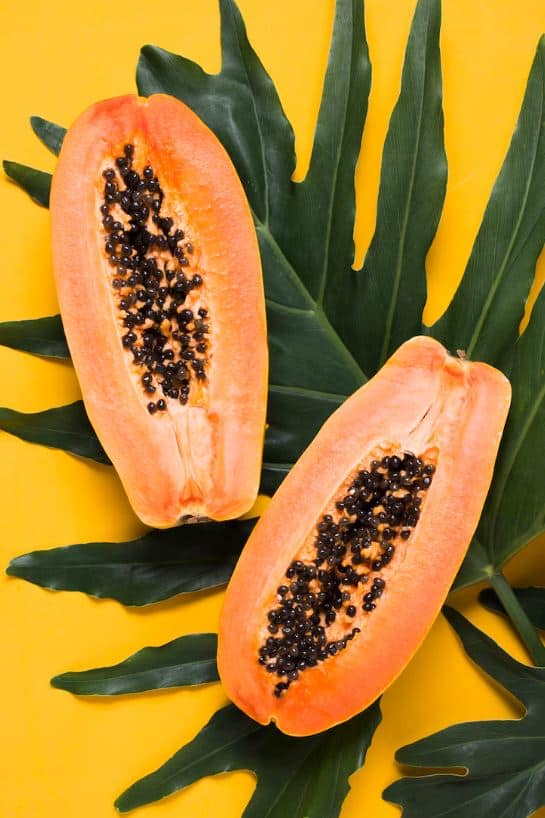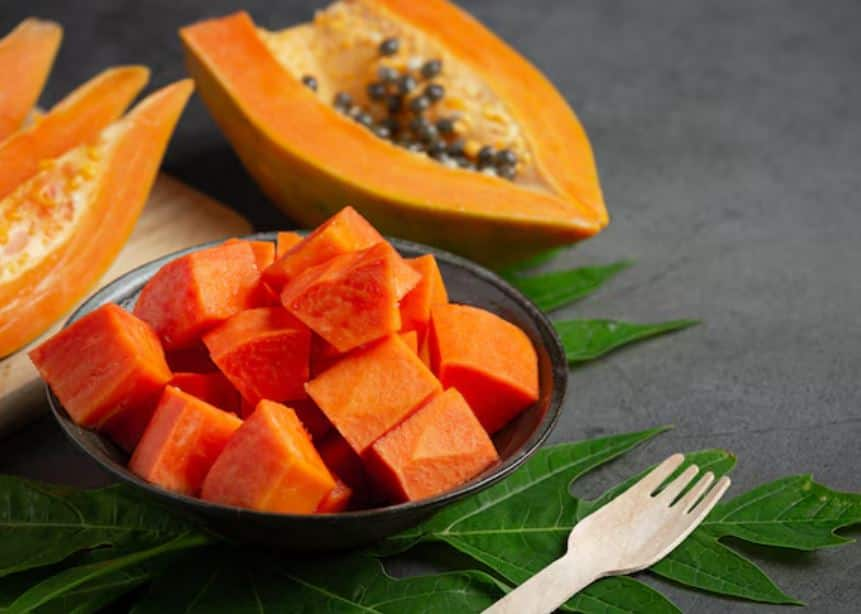Papaya is one of the most favorite fruits of summer – Fresh, sweet and rich in nutrients such as vitamin C, enzymes and antioxidants. But as the demand for this tropical fruit increases in the summer months, the risk of buying artificially ripe or fake papaya also increases. These chemically ripened fruits not only lack nutrition, but they can also damage your health in a long time. So it is important to know how to identify real and fake papaya, especially when you are trying to keep your family safe and healthy.
Here is a detailed guidance about differences between real and fake papaya using simple methods from your kitchen itself.
1. Check skin color and texture
Naturally ripe papaya has a uniform yellow-orange color and smooth texture. See green spots or spots, which are normal. On the other hand, chemically ripe papaya can have highly bright appearance, uneven colored and sudden color spots – often bright yellow spots with dark green. These indications indicate the use of artificial ripening agents such as calcium carbide.
quick tips: The real papaya usually changes gradually in green to yellow. If this change seems suddenly or unnatural, be careful.
2. Smell fragrances
Smell test can be the biggest clue for you. Ripe papaya has a light sweet, fruit -like aroma that becomes even faster near the stem. Fake or chemically ripe papaya does not often have a natural aroma or can cause pungent, artificial odor due to used chemicals.
What to do: Smell the papaya near the stem. If it does not have any smell or there is an artificial smell, it may not be naturally cooked.
3. Feel firmness
Naturally ripe papaya looks soft, but not pulp. If the fruit is very soft, especially in some places and in some places, it is a sign of a threat. Artificially cooking the outstand is quickly cooked, while the inner part may remain raw.
Touch Test: Press lightly on different parts. Real papaya gives mild resistance to the entire part. Inconsistent firmness can be a sign of chemical tampering.
4. Cut and inspect inside
When you cut the real papaya, its pulp is usually dark orange or red color, equally ripe, and is filled with black seeds. In contrast, fake papaya may have yellowing or spots, unpleasant odors or immature seeds.
Check: If it appears unusually dry, white from inside or there is an unpleasant smell from it, then avoid eating it.
5. Float Test (Bonus Tip)
Fill water in a bowl and add papaya to it. Natural papaya is dense and drowns slowly. The papaya that floats can be artificially cooked or chemicals can be added to it to increase its weight or color.
6. Know where you are buying
Buying reliable vendors, biological markets or your local farmer market is a great way to reduce the possibilities of getting fake fruits. Always choose seasonal and locally received papaya instead of off-season or imported papaya.
Why are fake papaya harmful?
Artificial ripening agents such as calcium carbide releases acetylene gas, which mimics the natural ripening process but is highly poisonous. Prolonged contact can cause serious health problems, including headaches, mood disturbances, skin problems, dizziness and even carcinogenic effects over time.
How to cook papaya safely at home
1. Use natural method: Place the green papaya with a ripe banana or apple in a brown paper bag. These fruits release ethylene gas, which in a few days cook papaya naturally.
2. Keep at room temperature: Do not keep raw papaya in the fridge. Let them cook naturally on the counter.
Papaya is a great thing in your summer diet – hydrating, friendly to digestion and rich in nutrients – but it is equally important to ensure that you are eating real fruits. With adulteration in food items in the market and increasing cases of chemically treated fruits, these simple domestic tests can make a huge difference in your health safety.
So next time you buy papaya, use your senses – see, touch, sniff and even check it in water – so that it can be known whether it is real or fake. Your summer health begins with smart, safe food options!


